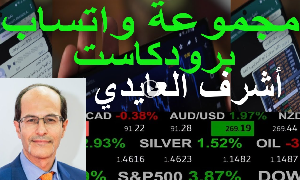Forum > View Topic (Media)
This thread was started in response to the Media:
أشرف العايدي على سي ان بي سي العربية -- 11 سبتمبر 2013
Unlike previous episodes of pronounced strength when the currency was boosted by a general advance in risk-on dynamics (robust market optimism, improved growth in G5 and BRICS) the current phase of sterling rally is primarily driven by UK-specific factors across manufacturing, construction and services sectors. The marked improvement in labour markets fails to have any notable impact on wages but maintains market rates at 2-year highs.
Sterling is now the best performing currency among the 11 most actively traded currencies over the last 6 months, rising 5.8% against the US dollar, and hitting 4year highs against the yen.
The UK unemployment rate (ILO measure) fell to 7.7%, hitting its lowest level since November, which also matched the lows in April 2011, September 2009 and May 2009. The ONS' claimant count unemployment rate hit 4.2%, its lowest level since February 2009. Jobless claims fell by 32,600, marking the 10th straight monthly decline and accumulating a net decline of 177,000 in unemployment claims since November. But the 3-month average of weekly earnings fell to a 4-month low of 1.1% y/y from 2.2%.
Yields on 10-year gilts hit a fresh 2-year high at 3.05%, or 0.06% above their US counterparts, the highest differential in 6 months.
GBP also Boosted by Britain's Isolation
So far, the market implications of a strike on Syria have been generally binary; whereby a looming attack weighs on equities, risk currencies (primarily the euro) to the benefit of the US dollar. Sterling has been spared from the sell-off in risk currencies due to Britain's isolation from the crisis following the anti-strike vote in British Parliament. The positive impact on USD from a looming strike stems from the equities-currencies chain of reaction.
Report Reply





